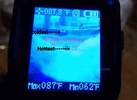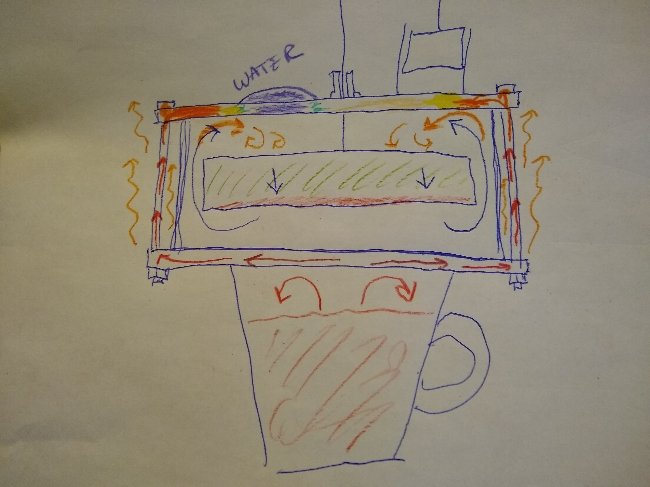What his method of debate is:
1, Ask a difficult question.
2, Dismissal of it's politely given answer.
3, Post a belief that his observation and experiments are 'proof' that the laws and science of thermodynamics is wrong.
4, Demand proof that Tom is wrong.
5, Dismiss that mathematical proof.
6, Post an immense amount of strawman filler obfuscating any possibility of cleanly replying.
7, Name calling when people start laughing at him.
I've seen that over and over in his postings.
Tommy, the sippy bird is powered by low humidity and atmospheric processes, like sun and rain that regulates that humidity. Technically it's powered by the temperature difference between sunshine and deep space cold. Not like Tesla's description at all.
Furthermore it demonstrates the second law perfectly. It won't start bobbing until heat is rejected from its head.
Evaporative cooling is an open system heat removal by mass flowing away from the liquid water from the conversion to gas. Each molecule taking its energy with it. It stops if humidity gets too high.
Try closing the system with a glass dome.
As far as us running experiments for you. It is not us that has any problems with classical physics. Your banter and denial powered by your limited experience and poor lab practices is what needs improvement. They are misleading you severely. We've all been educated and learned how to do better science. Classic science is backed by mathematical theory and lots of empirical data, and lots of students challenging and experimenting for 200 years. Your banter is baseless.
Your work has been peer reviewed and has been found to be lacking key data. We suggest to you refrain from publishing. Get more data, not more of the same data. This is out of the kindness of our hearts. Or as my highschool shop teacher used to say, "Okay. It your funeral". He was speaking figuratively about the grades we'd be getting. Eff's... We have no need to point out your fallacies. We don't benefit in anyway from correcting you, except having a more knowledgeable public, one person at a time. Enjoy the help even though it is just constructive criticism. We are only attempting to point out the proper way to use the physics of classical thermodynamics. Many many people make simple errors trying to learn it. Good luck.
.
1, Ask a difficult question.
2, Dismissal of it's politely given answer.
3, Post a belief that his observation and experiments are 'proof' that the laws and science of thermodynamics is wrong.
4, Demand proof that Tom is wrong.
5, Dismiss that mathematical proof.
6, Post an immense amount of strawman filler obfuscating any possibility of cleanly replying.
7, Name calling when people start laughing at him.
I've seen that over and over in his postings.
Tommy, the sippy bird is powered by low humidity and atmospheric processes, like sun and rain that regulates that humidity. Technically it's powered by the temperature difference between sunshine and deep space cold. Not like Tesla's description at all.
Furthermore it demonstrates the second law perfectly. It won't start bobbing until heat is rejected from its head.
Evaporative cooling is an open system heat removal by mass flowing away from the liquid water from the conversion to gas. Each molecule taking its energy with it. It stops if humidity gets too high.
Try closing the system with a glass dome.
As far as us running experiments for you. It is not us that has any problems with classical physics. Your banter and denial powered by your limited experience and poor lab practices is what needs improvement. They are misleading you severely. We've all been educated and learned how to do better science. Classic science is backed by mathematical theory and lots of empirical data, and lots of students challenging and experimenting for 200 years. Your banter is baseless.
Your work has been peer reviewed and has been found to be lacking key data. We suggest to you refrain from publishing. Get more data, not more of the same data. This is out of the kindness of our hearts. Or as my highschool shop teacher used to say, "Okay. It your funeral". He was speaking figuratively about the grades we'd be getting. Eff's... We have no need to point out your fallacies. We don't benefit in anyway from correcting you, except having a more knowledgeable public, one person at a time. Enjoy the help even though it is just constructive criticism. We are only attempting to point out the proper way to use the physics of classical thermodynamics. Many many people make simple errors trying to learn it. Good luck.
.





